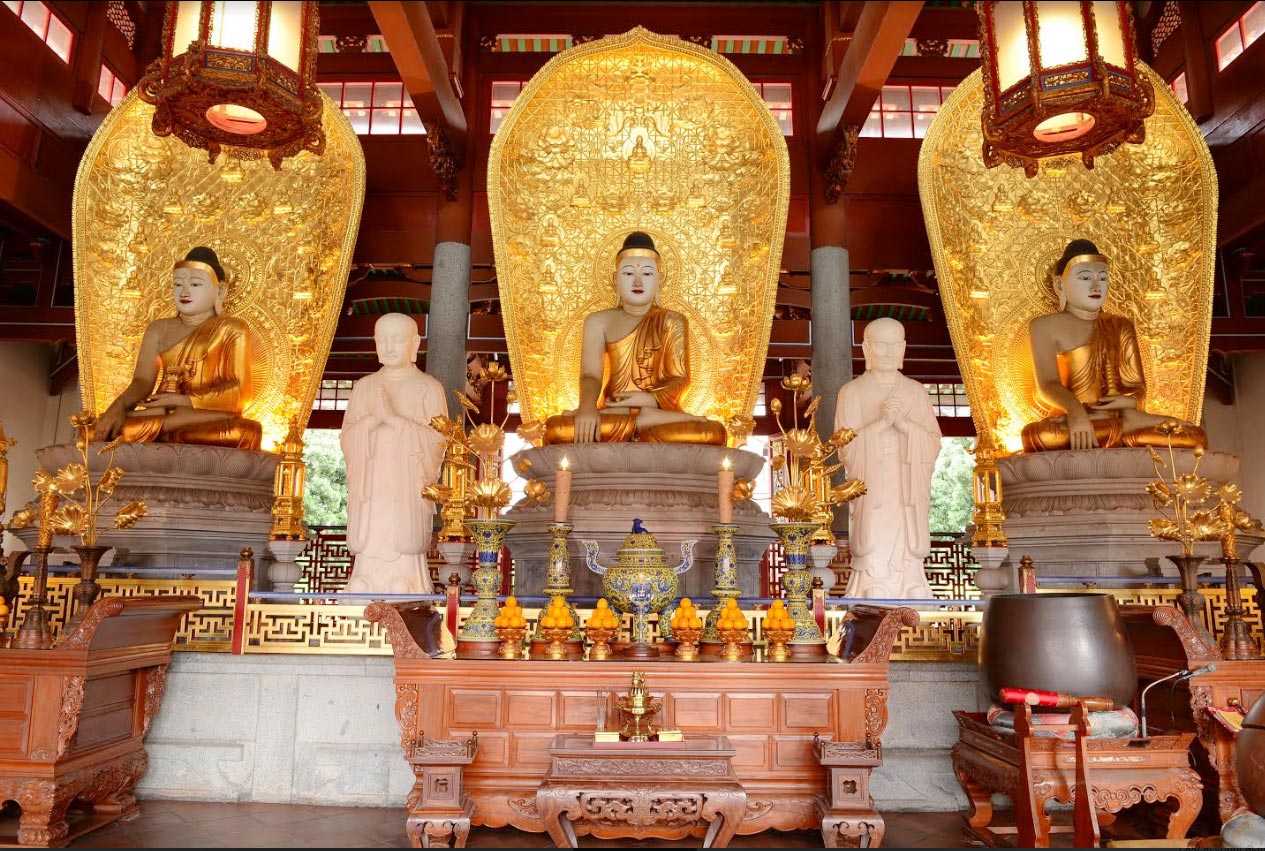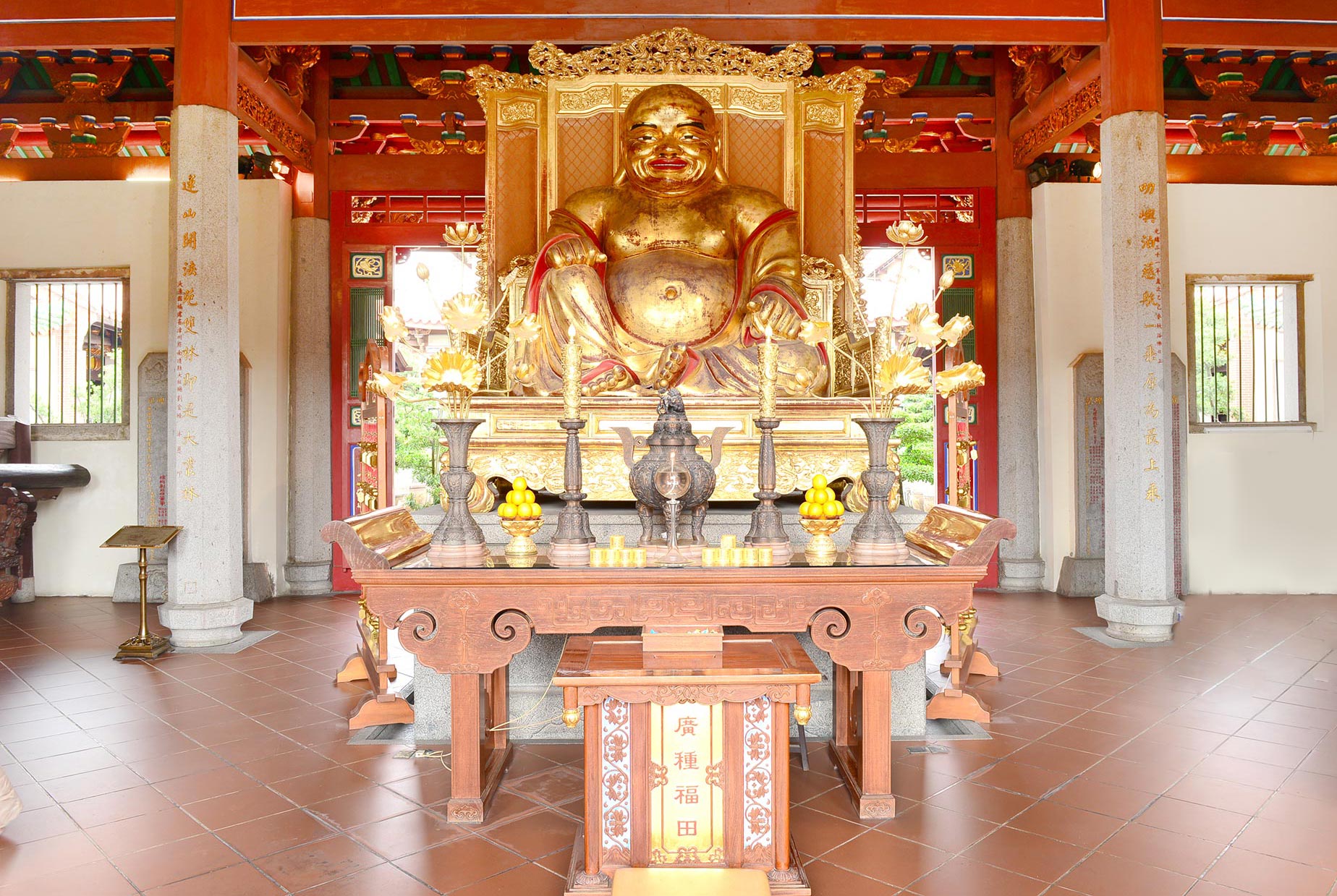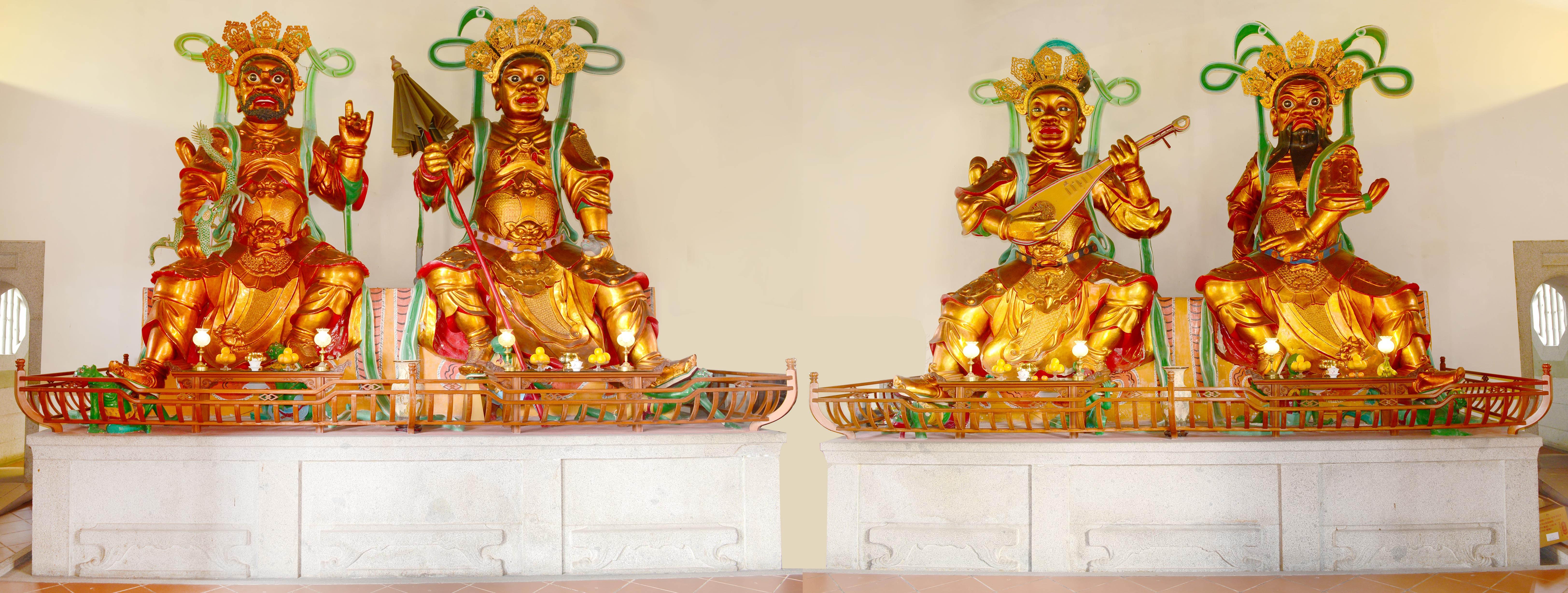

The construction of the original Mahāvira Hall began in 1904 and was completed in 1907. For more than a century, this Hall had undergone both restoration and renovation. Located along the central axis from south to north, this is the most important and most decorated hall in the monastery.
Inside the Hall, there are Buddhas of the three worlds, all sitting cross-legged on the altar. In the centre enshrines the Śākyamuni Buddha, the master of this world, flanked by two of his ten chief disciples – Venerable Mahākāśyapa and Venerable Ānanda on his left and right respectively. He was born to a royal family and was given the name Siddhartha. For the ultimate reality of life, he renounced his royal background at the age of 29. With great determination, six years later, he awakened and became the Buddha under a Bodhi tree. For 45 years, he lived and shared the Dharma he had discovered under the Bodhi tree and passed away at the age of 80. On his left, in similar posture, is the Bhaṣajyaguru Tathāgata or Medicine Buddha who possesses the power to heal and the ability to avert evil and prolong life. On his right, is the Amitabha Buddha, or master of the Sukhāvatī or Western Paradise in simple translation.
Above these Buddhas, there are three exquisitely carved caisson ceilings or ZaoJing which are crafted to represent the Buddhas’ canopies. The entire Hall is well supported by 26 pillars, with some as tall as 10 metres. The unique blend of Fuzhou and Quanzhou architectural styles in the Hall exhibits not only the skilled workmanship of those workers but also an insight into the distinctive cultures of early immigrants in Singapore.

Behind the Śākyamuni Buddha enshrines a white Jade Avalokiteśvara Bodhisattva from Myanmar since 1903, facing north towards the Dharma Hall. Always ready and capable of rendering help, this goddess of mercy had become a saviour of all sentient beings in perils and distress through his various transformations and skillful means.

Built originally in 1905, this Hall now houses the statue of Maitreya Bodhisattva in the centre, the four Celestial kings on both sides and the Skanda Bodhisattva behind the Maitreya Bodhisattva but facing the Mahavira Hall.
The Hall is grand and captivates with its high ceiling and pillars which feature intricate dragon carvings and other beautiful decorative pieces. All the beams in the hall, are constructed according to a wooden framing system most commonly found in traditional Zhangzhou-style architecture.

Behind the Maitreya Bodhisattva stands the Skanda Bodhisattva, looking to the North of the Monastery. In Chinese Buddhism, he is a devoted guardian of Buddha’s teachings, and manifests always as a majestic general, clad in full armor, mighty and brave with a vajra in hand.

On both sides of this Hall, are the four celestial kings whose vow is to protect the four quarters of the universe. King Chíguó of the East (Dhr̥tarāstra Deva in Sanskrit), controls the eastern continent and rules over the gandharvas and piśācas, using the musical instrument pipa in his hand. For King Zēngzhǎng of the South (Virūdhaka Deva), he is dedicated to help all beings and protects the southern continent with the sword in his hands. King Guǎngmù of the West (Virūpakṣa Deva) who sees everything, rules over the nāgas and protects the western continent. King Duōwén (Vaiśravaṇa Deva) who hears everything, is a protector of people’s wealth, and carries a jeweled umbrella in his hand.
According to the objects held in their hands, the Chinese believes that the four Celestial kings embody the auspicious sign, “fēng diào yǔ shùn” (风调雨顺), meaning a year of peace, good luck, fortune and happiness for the people.

Guan Yin Dian is located at the far eastern end of the monastery. Within the Hall, in the centre, is the personification of compassion – a 11.2metres tall Guan Yin Pu Sa (also known as Avalokiteśvara Bodhisattva in Sanskrit), with a thousand hands and a thousand eyes. The vacant walls, above the doors on the two sides, were filled with 3000 copper figures of Avalokiteśvara bodhisattva, all seated, calm and dignified.






